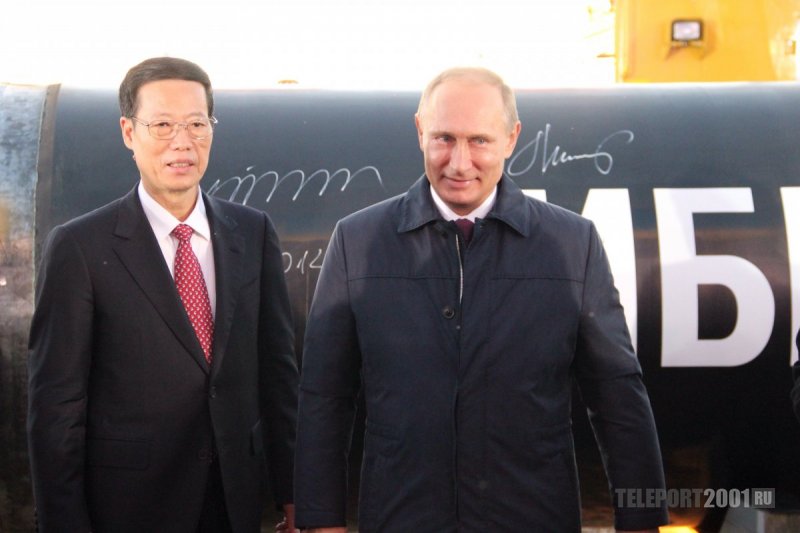A year ago, Russian and Chinese delegations met on a crisp September day on the outskirts of the Russian city Yakutsk, which in the game of Risk, is the small territory wedged between Siberia and Kamchatka.
Gazprom employees from the Chayanda gas field donned cerulean blue flame-resistant jumpsuits, and Russian President Vladimir Putin and his counterpart Vice Premier Zhang Gaoli wore suits and black overcoats.
Orchestral music triumphantly played as the two men affixed their signatures to the freshly-welded ‘Power of Siberia’ pipeline, which officially began its construction on September 1, 2014. In Russia, where natural resources account for 18 percent of GDP, the signing of new pipelines is always a grandiose affair.
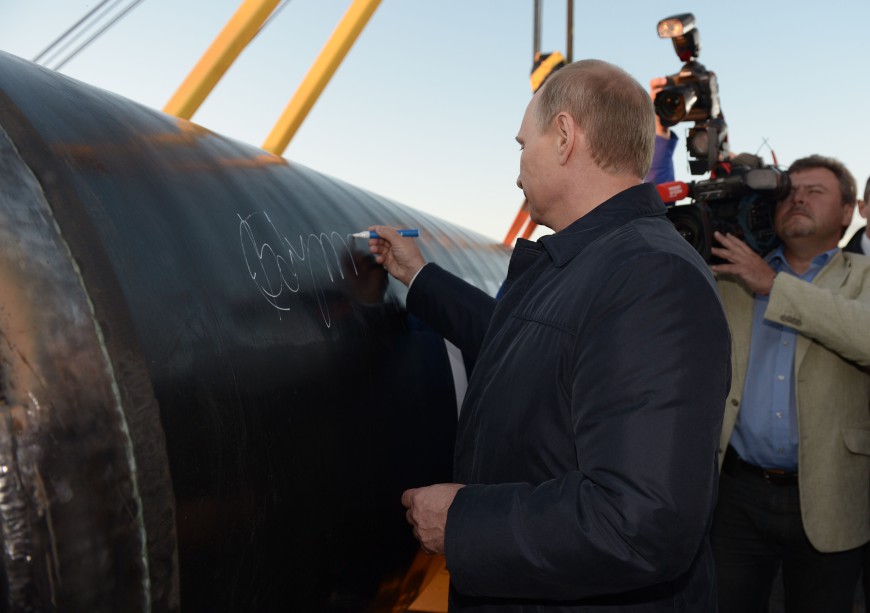
It was indeed a show. There were a number of traditional Republic of Yakutia dances performed, and a grand finale of ‘Katusha’, the famous Red Army hymn, was sung in both Russian and Chinese.
Though the Parker Brothers gave Yakutsk its own colored sovereignty in its boardgame, in modern Russia, the territory is in fact part of Siberia, and is situated so far northeast that it is closer to Alaska than it is to Moscow.
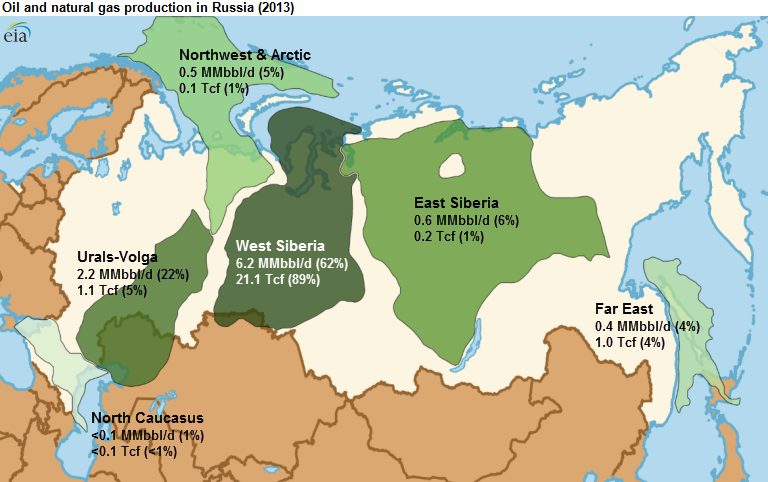
Putin travelled all this way to sign a piece of metal because the Eastern Siberia region will soon have to make up for the fast depleting resources in Western Siberia. It is currently the third largest gas producing region in Russia.
Gazprom estimates resources in Eastern Siberia and the Far East hold 52.4 trillion cubic meters in onshore reserves.
In the pipeline
The plan is to build a 3,968 km pipeline from Eastern Siberia to China’s populous eastern populations. If completed, it will be the world’s largest pipeline. Russia’s largest steel pipeline manufacturer, TMK, will provide building materials.
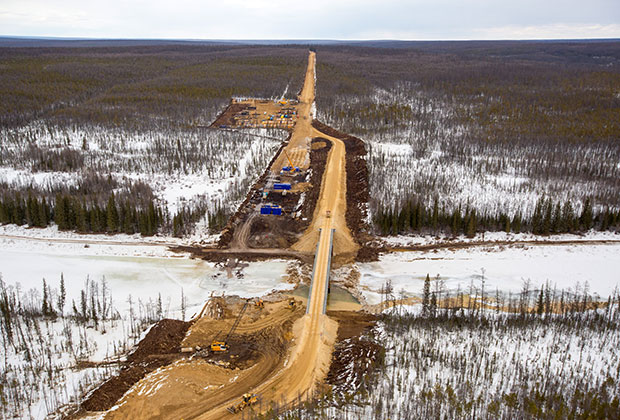
Natural gas would flow to China from the Chayandinskoye field in Yakutia, and the Kovyktinskoye and Chikanskoye fields in the Irkutsk Region.
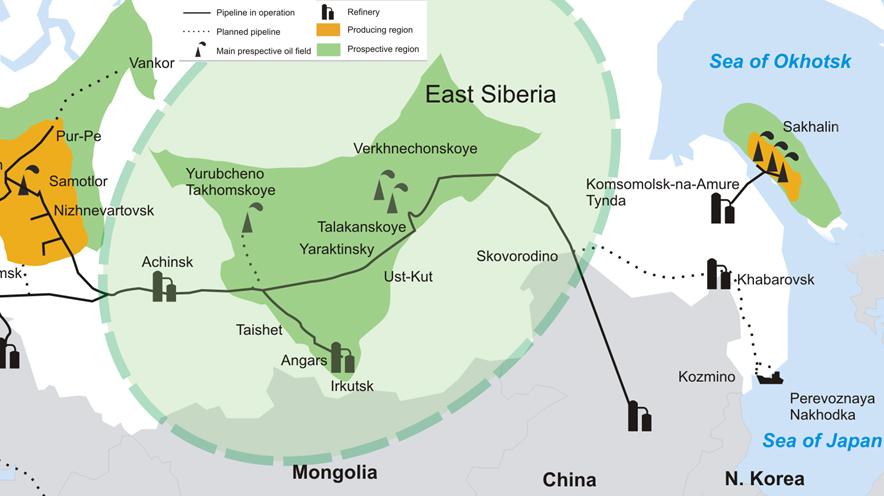
Click here to see the full version of this map.
If Rosneft is at some point granted permission to use the energy network, gas could also be pumped from the Vankor and Yurubcheno-Tokhomskoye fields, both of which Rosneft has offered shares to Chinese partners.
No Deal
Even though CEO Alexei Miller was in Beijing last week, Gazprom did little to solidify its agreements to supply China with natural gas from Siberia, a deal initially agreed on in May 2014.
The timing couldn’t have been more important. Relations with Europe were withering away over US-led sanctions and political feuds over the territorial integrity of Ukraine escalated. The China deal in May 2014, which Putin himself said was “epochal” marked Russia’s first public step in its ‘pivot’ toward the east.
Construction costs of the Power of Siberia are estimated to be $55 billion, more than the company is even worth. Gazprom’s current market capitalization is $50 billion, a mere shell compared to the robust $365 billion value in May 2008. Cut off from western financiers after Russia’s annexation of Crimea, Gazprom is trying to get China to put down capital to pay for the expensive pipeline project.
China only agreed to the 400 billion (2.4 trillion yuan) deal last May because Russia promised the Power of Siberia route, which will send gas to the overpopulated and coal-burning northeast region, instead of the western route it had been pushing for decades.
China has already begun construction on its section of the Power of Siberia, which will meet up with the Russian section in the city of Blagoveshchensk, a border town.
Russia is also trying to get China to agree to a cheaper western pipeline route, known as the ‘Altai’ pipeline, a much shorter pipeline that would send natural gas to the western province of Xinjiang instead.
If both pipes are completed, Russia will have the capacity to send 68 bcm to China, making it Russia’s biggest natural gas import client.
With talks currently at a deadlock, analysts believe Chinese and Russian leaders will resume discussions in 2016.
Europe back in focus
Meanwhile, Gazprom is preoccupied with two more straightforward European projects.
On September 4, Gazprom set up a joint venture with foreign partners (E.ON, Royal Dutch Shell, OMV, Wintershall, and Engie – formally EDF Suez) to build Nord Stream 2, which will supply an additional 55 billion cubic meters (bcm) of cubic gas to Germany, bringing the pipeline’s total capacity to 110 bcm, or about two-thirds of the total gas the EU imports from Russia. The cost will be about 1/5 that of Power of Siberia and is slated for completion in 2019.
The second distraction from China is the Turkish Stream, which is the reincarnation of the South Stream, and will deliver natural gas to central and southern Europe via Turkey and Greece. At this point, it doesn’t look like the grand 63 bcm capacity pipeline will come to fruition, but instead a single line that will deliver 15.75 bcm to Turkey.
For now, Gazprom is sticking to the gas game it knows best – Europe, which coincidentally accounts for 56 percent of the gas giant’s sales.

